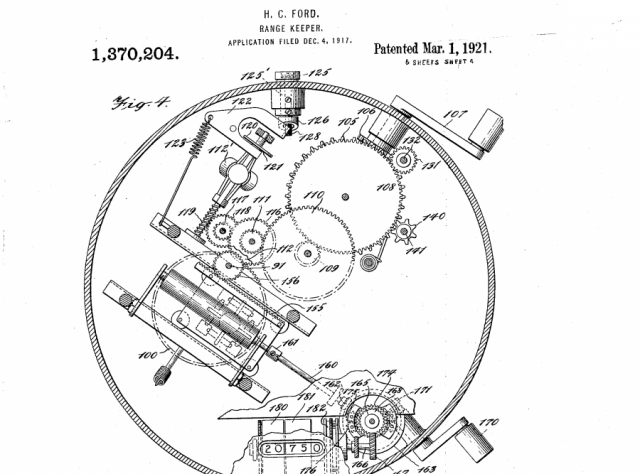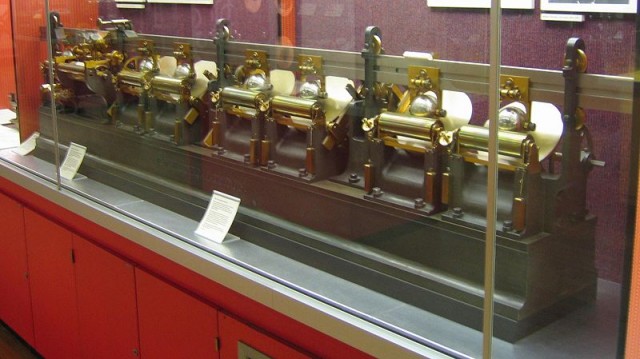Before Silicon Valley got nasty, the Pirates of Analog Alley fought it out
Stealing ideas and fighting over patents existed back when computers had gears, too.

A patent drawing for the Range Keeper, Hannibal Ford's analog fire control computer.
The history of information technology has a way of repeating itself. Every era's corporate competitors elbow each other for success, try to better the other's ideas, and sometimes just plain steal from one another. In that light, it's no surprise that the battles of today’s technology giants may have been foretold by another wave of innovators—those at the turn of the 20th century, when electricity was new and computing was done with real machines. Think the kind with gears, cams, and shafts.Absolute Zero
The startup culture created by the electrification and communications booms of the late 19th and early 20th centuries produced a generation of engineers looking for the next big thing. But their similarities with today's tech leaders go beyond the fact that "a generation of engineers looking for the next big thing" could just as easily describe anyone at Google, Facebook, or maybe even SnapChat. While researching the recent Ars report on Naval analog computers, parallels immediately revealed themselves. The behavior of the men who pioneered this analog computing eerily mimics actions we're more familiar with from Steve Jobs, Bill Gates, Larry Page and Sergey Brin, and the rest of today’s tech pantheon. These early engineers were, if you’ll pardon the phrase, the Pirates of Analog Alley.
Lord Kelvin's "harmonic analyzer," with disk integrators.
While Charles Babbage may be the “father of computing,” the father of fire control computing (and of modern analog computing) was William Thompson, also known as Lord Kelvin. As detailed in Harold Sharlin's biography Lord Kelvin-The Dynamic Victorian, Kelvin was like a one-man equivalent of PARC or the Bell Labs of the latter half of the 20th century—a fountain of great ideas. Some of those ideas, he cashed in on; some, he let others steal.
Kelvin figured out a number of things about long-distance telecommunications. He developed a model for the bandwidth capacity of undersea cables and invented equipment to automatically send and record messages. Enriched by (and knighted for) his success with trans-Atlantic telegraph cables and equipment, Kelvin was perpetually tinkering. In 1871, he perfected a little project his older brother had been working on: the “integrating machine,” or differential analyzer.
This device would be the basis of Kelvin’s machine to calculate tide tables. Nearly 60 years later, the same principles would be used at MIT to create the first machine called a differential analyzer, which is used for calculating complex differential equations. The integrating engine would be in the back of Kelvin’s mind 15 years later when, as a board member for Linotype & Machinery Co. Ltd., he had a conversation with the company’s managing director, Arthur Pollen....MORE
